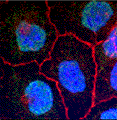Biochemistry, Department of
ORCID IDs
Therese Mitros http://orcid.org/0000-0001-6708-3988
Brandon T. James http://orcid.org/0000-0001-9134-552X
Kankshita Swaminathan http://orcid.org/0000-0002-4936-509X
Daniel S. Rokhsar http://orcid.org/0000-0002-8704-2224
Document Type
Article
Date of this Version
2020
Citation
NATURE COMMUNICATIONS (2020) 11:5442
doi:10.1038/s41467-020-18923-6
Abstract
Miscanthus is a perennial wild grass that is of global importance for paper production, roofing, horticultural plantings, and an emerging highly productive temperate biomass crop. We report a chromosome-scale assembly of the paleotetraploid M. sinensis genome, providing a resource for Miscanthus that links its chromosomes to the related diploid Sorghum and complex polyploid sugarcanes. The asymmetric distribution of transposons across the two homoeologous subgenomes proves Miscanthus paleo-allotetraploidy and identifies several balanced reciprocal homoeologous exchanges. Analysis of M. sinensis and M. sacchariflorus populations demonstrates extensive interspecific admixture and hybridization, and documents the origin of the highly productive triploid bioenergy crop M. × giganteus. Transcriptional profiling of leaves, stem, and rhizomes over growing seasons provides insight into rhizome development and nutrient recycling, processes critical for sustainable biomass accumulation in a perennial temperate grass. The Miscanthus genome expands the power of comparative genomics to understand traits of importance to Andropogoneae grasses.
Additional co-authors include: Mohammad B. Belaffif, Lindsay V. Clark, Shengqiang Shu, Hongxu Dong, Adam Barling, Jessica R. Holmes, Jessica E. Mattick, Jessen V. Bredeson, Siyao Liu, Kerrie Farrar, Stanisław Jeżowski, Kerrie Barry, Won Byoung Chae, John A. Juvik, Justin Gifford, Adebosola Oladeinde, Toshihiko Yamada, Jane Grimwood, Nicholas H. Putnam, Jose De Vega, Susanne Barth, Manfred Klaas, Trevor Hodkinson, Laigeng Li, Xiaoli Jin, Junhua Peng, Chang Yeon Yu, Kweon Heo, Ji Hye Yoo, Bimal Kumar Ghimire, Iain S. Donnison, Jeremy Schmutz, Matthew E. Hudson, Erik J. Sacks, & Stephen P. Moose
MitrosNatureCommunications2020GenomeSuppl2.xlsx (21618 kB)
MitrosNatureCommunications2020GenomeSuppl3.xlsx (24878 kB)
MitrosNatureCommunications2020GenomeSuppl4.xlsx (5635 kB)
MitrosNatureCommunications2020GenomeSuppl5.xlsx (26 kB)
MitrosNatureCommunications2020GenomeSuppl6.xlsx (1381 kB)
MitrosNatureCommunications2020Suppl7.xlsx (2058 kB)
MitrosNatureCommunications2020GenomeSuppl8.xlsx (1577 kB)
MitrosNatureCommunications2020GenomeSuppl9.xlsx (4357 kB)
MitrosNatureCommunications2020GenomeSuppl10.txt (53 kB)
Included in
Biochemistry Commons, Biotechnology Commons, Other Biochemistry, Biophysics, and Structural Biology Commons



Comments
This article is licensed under a Creative Commons Attribution 4.0 International License